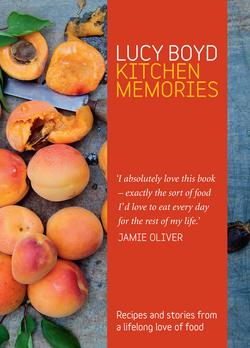Читать книгу Kitchen Memories - Lucy Boyd - Страница 7
SPRING
ОглавлениеEarly spring is the season for young shoots, swelling buds and fresh new growth. At Petersham, the garden is waking up after the winter and despite the beds being given a heavy mulch of compost there are splatterings of green against the dark soil where the weeds have started growing, a sign that the ground is warming up and the days are getting longer. There is a brightness and a feeling of excitement and anticipation about what is to come.
In March, there is a distinct shift in what I want to cook and how I use ingredients. The first young artichoke buds are tender and sweet, delicious eaten raw with fiery new-season’s olive oil or the creamy pale shoots of forced sea kale in a salad with oranges, and are at their juiciest and best over winter and in early spring. Instead of stews and gratins which need longer cooking, I want to eat lighter meals – my griddle comes out from the cupboard so I can grill a piece of chicken or a fillet of wild salmon quickly, in contrast to the winter comfort of a slumbering roast lazily bubbling away in the oven while you go off on a walk.
Spring ingredients can have a relatively short season and so are valued all the more because of it. Sea kale in late February/March, rhubarb, the first early tomatoes of spring – ‘Marinda’ and ‘Camone’ with their red-and-green-flecked crunchy skins and amazing flavour: tart, acidic and not too sweet.
As spring gets going more and more ingredients become available, purple sprouting broccoli, spring greens, soft-leaf herbs, early spinach and chard, Jersey Royals, young baby onions and carrots, asparagus and one of my favourite ingredients of all – broad beans.
I love the first broad beans as they arrive in spring. The pods are bright green, young and fresh and have not swelled into the furry pods that contain the nuttier, more mature beans with a thick skin that you find later on in the season. In Italy we would pod the small beans, pour a small amount of good extra-virgin olive oil over them and add a few grindings of black pepper and some roughly broken pieces of pecorino stagionato, a fairly young sheep’s milk cheese that is fruity and tart.
Mostly I am excited by cooking with ingredients that should be eaten in spring when they are at their best and most delicious and I don’t want to miss out on them – the first early tomatoes which have a taste and texture that is so very different from summer varieties, which will go on through the summer and into the autumn months. I want to enjoy the tender buds of artichokes before they develop their chokes and become woody, just as I look forward to and want to taste the first apricots of spring with their dense jammy flesh and tart sweetness.
